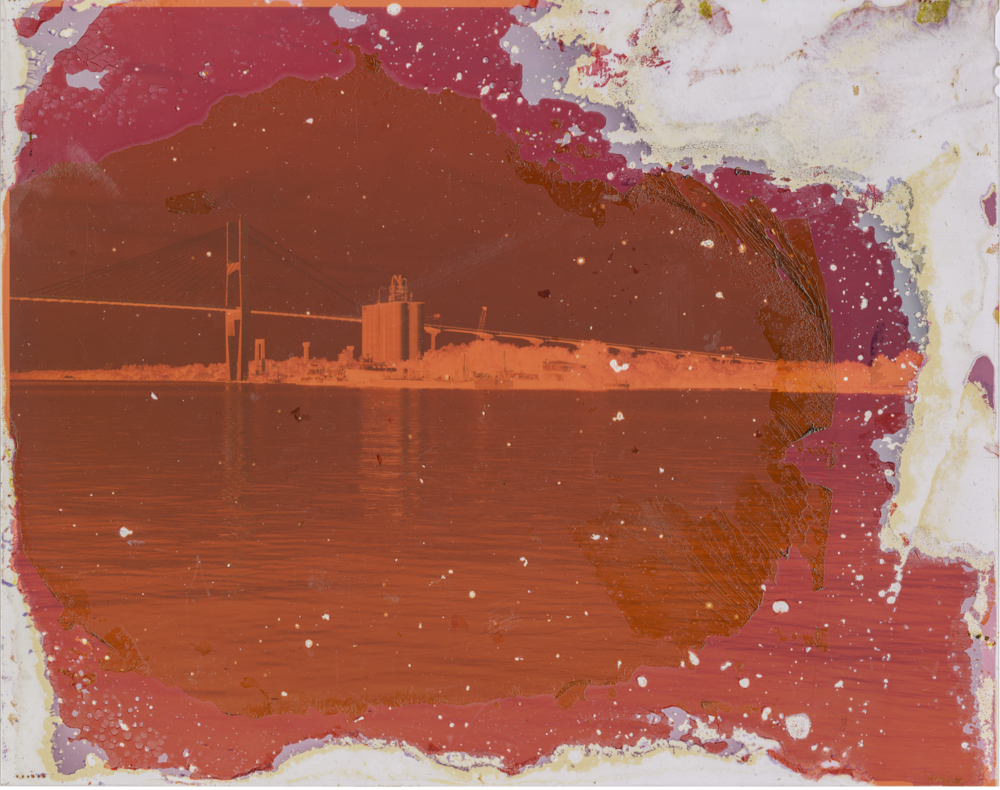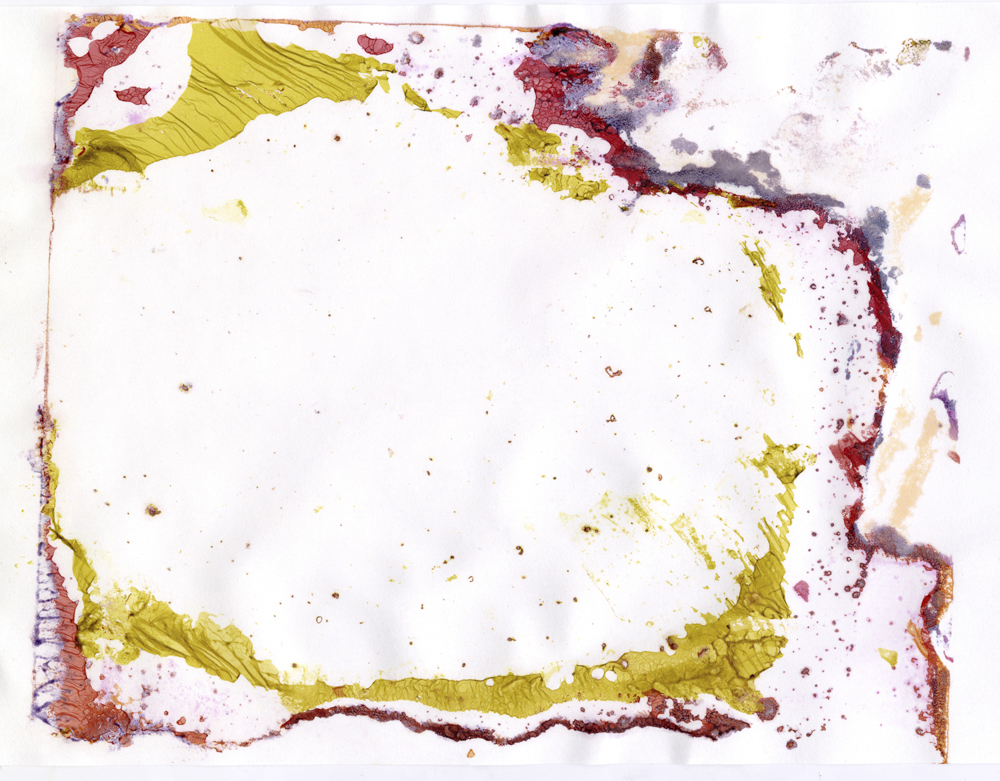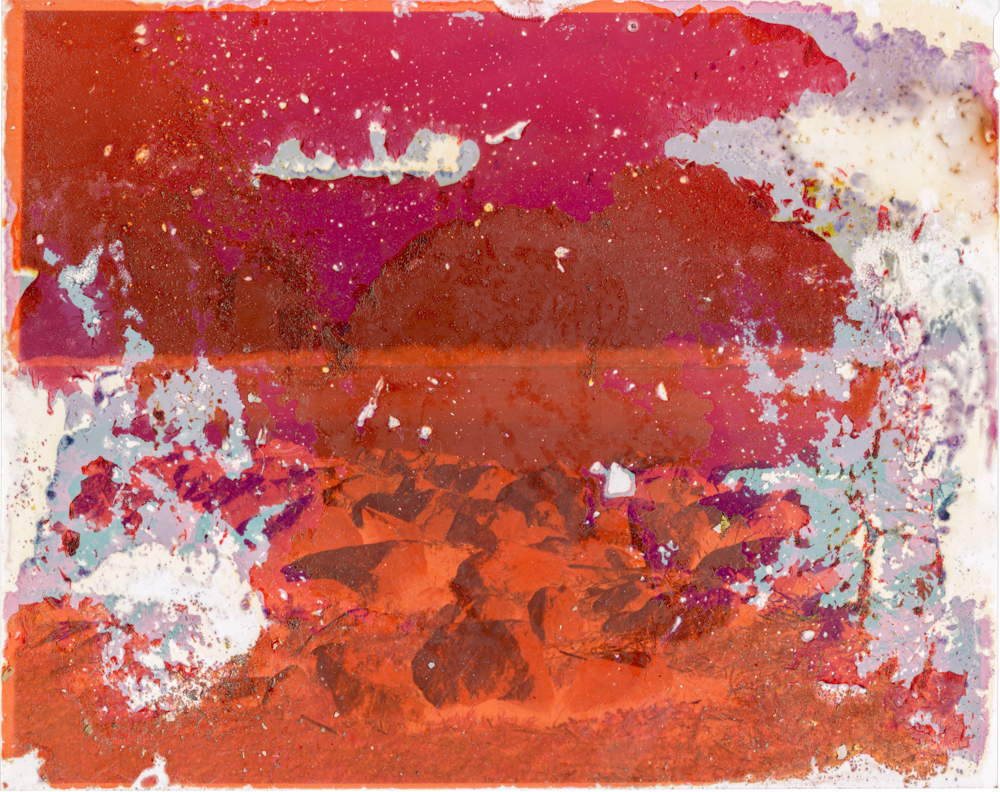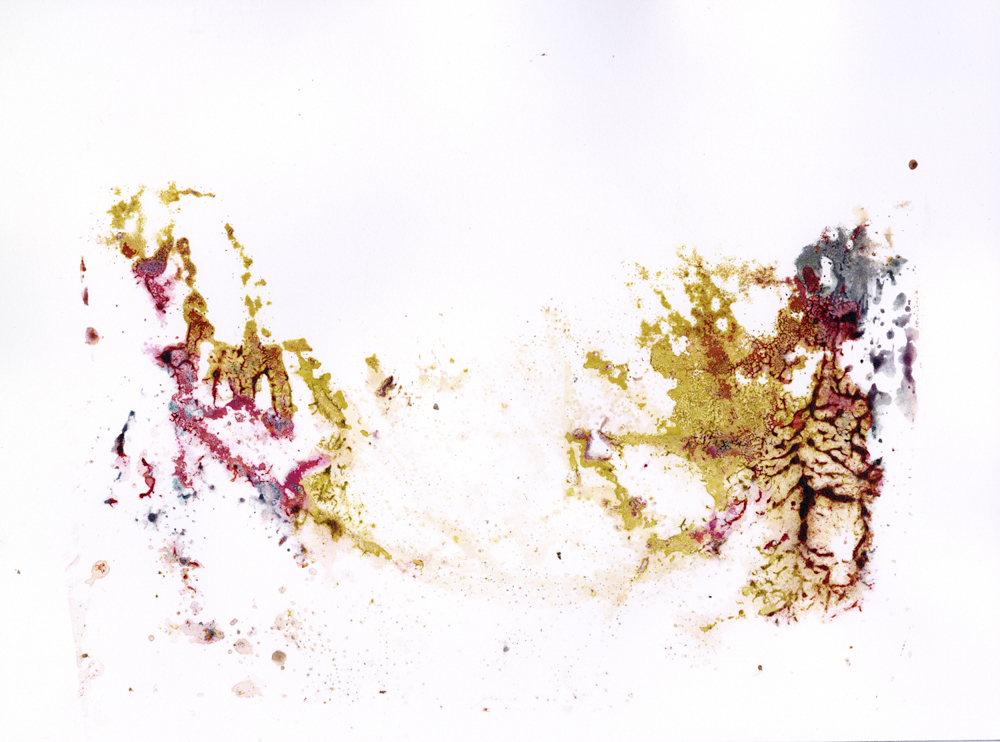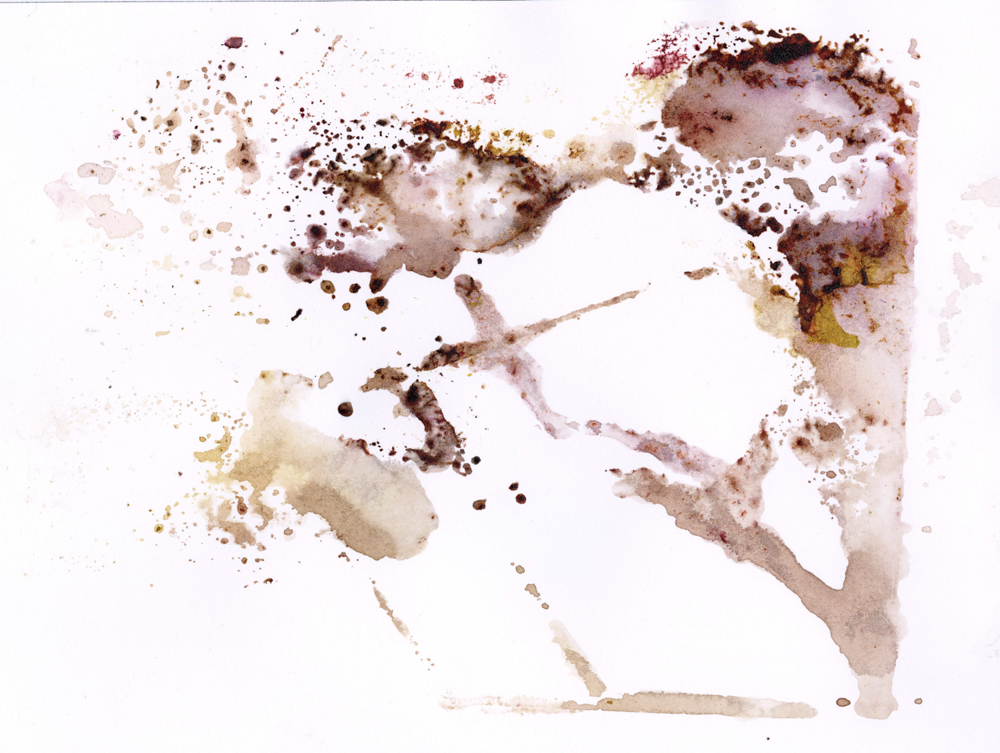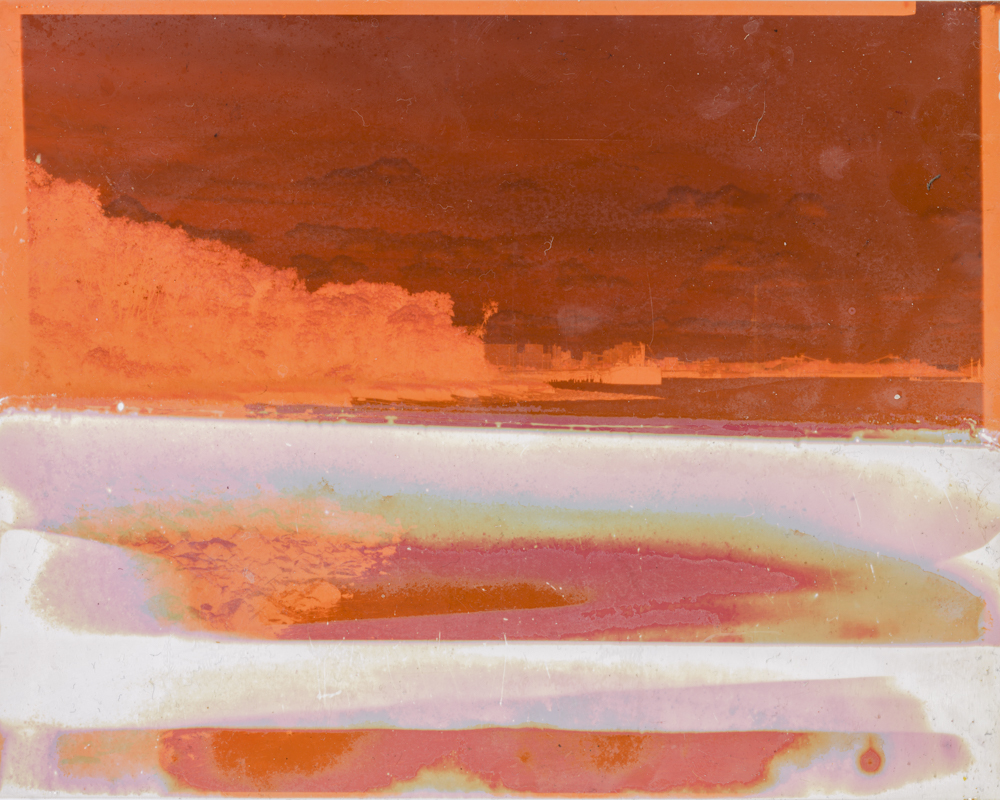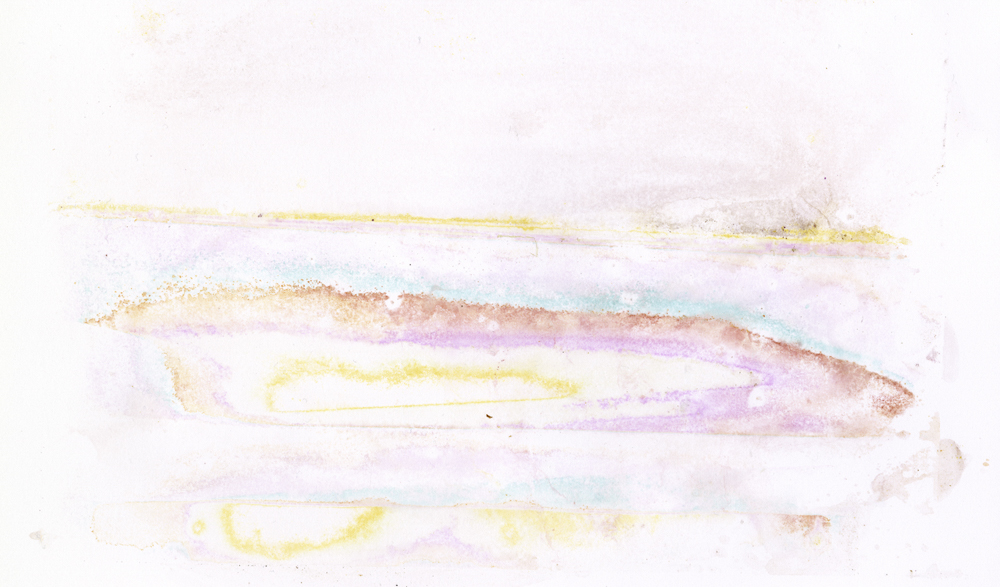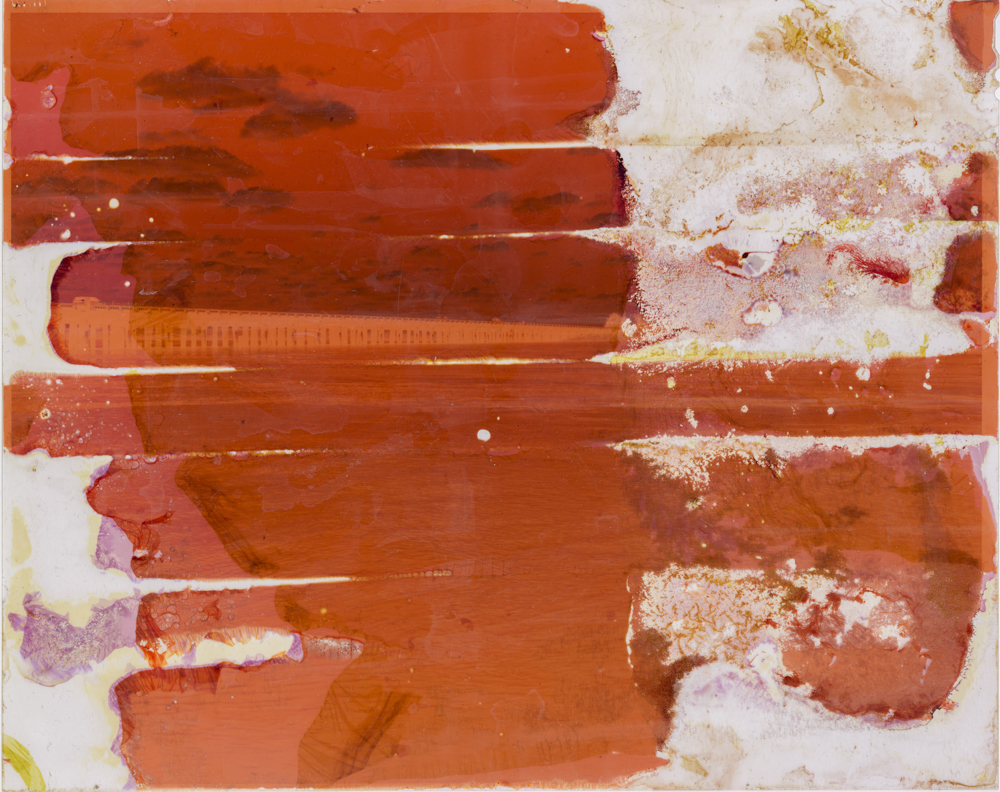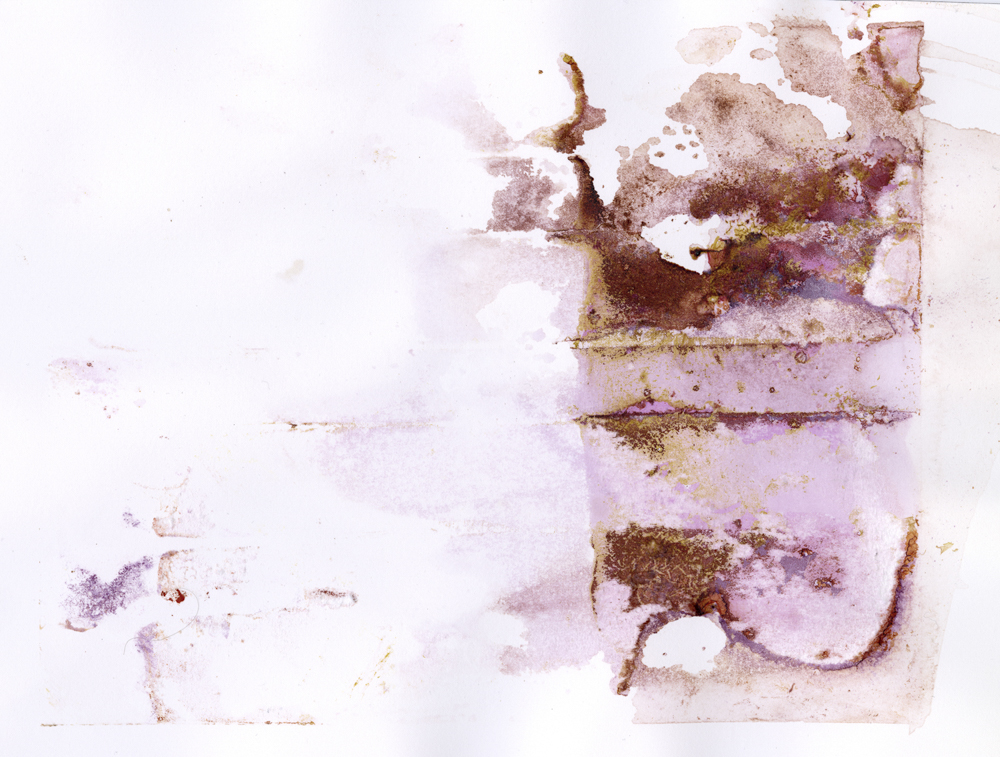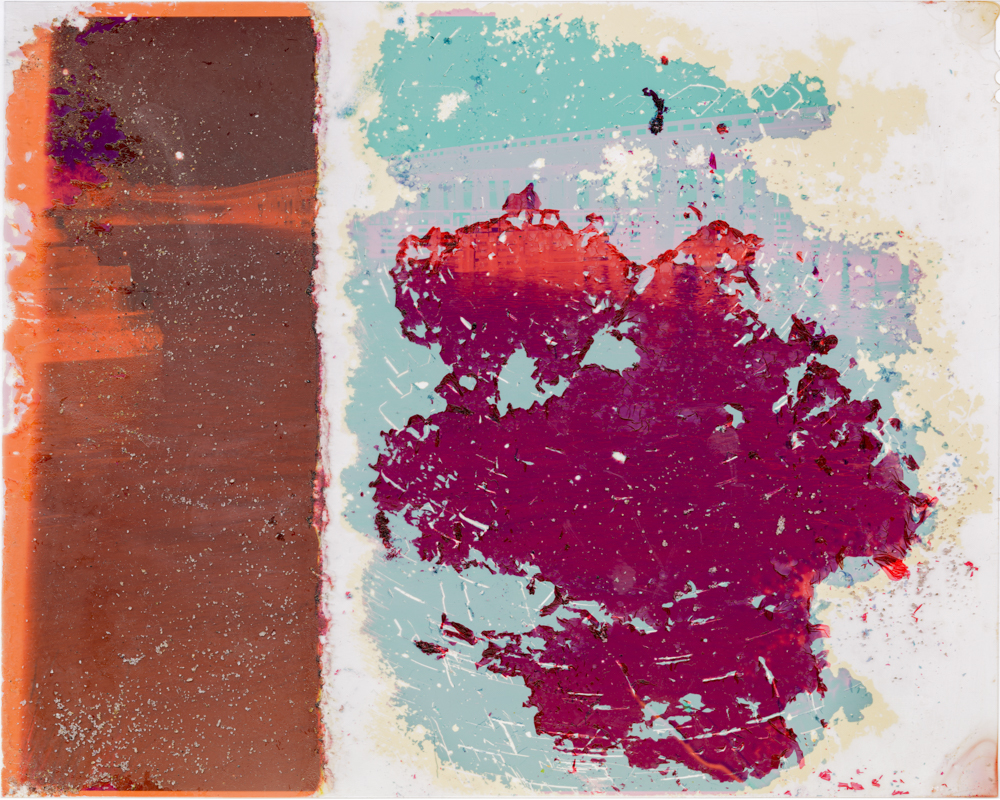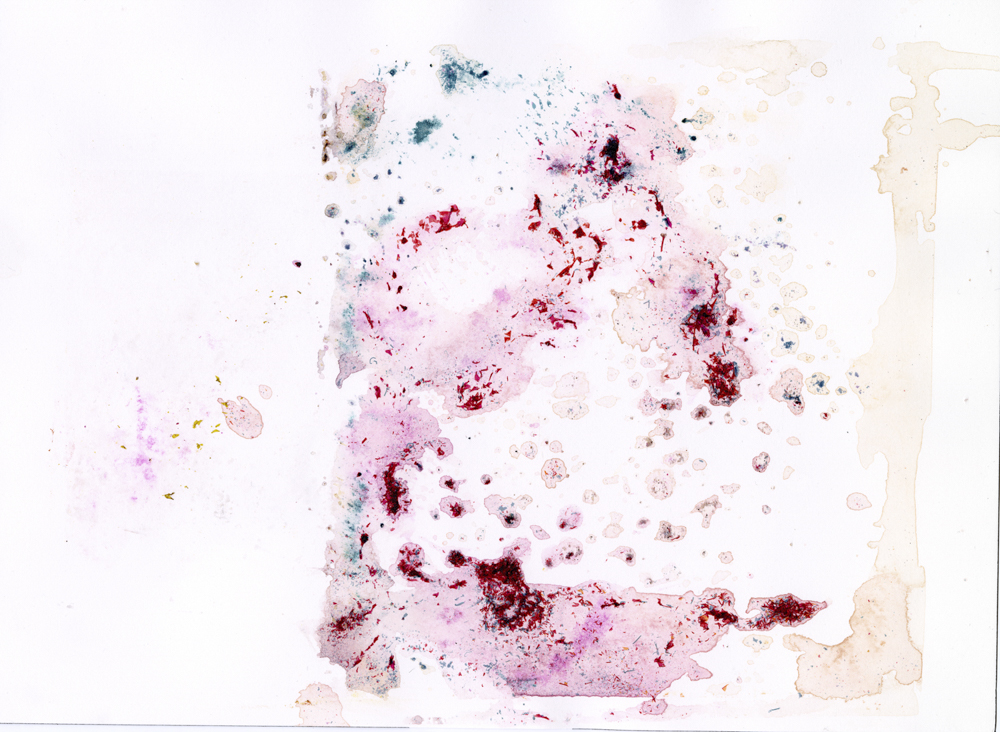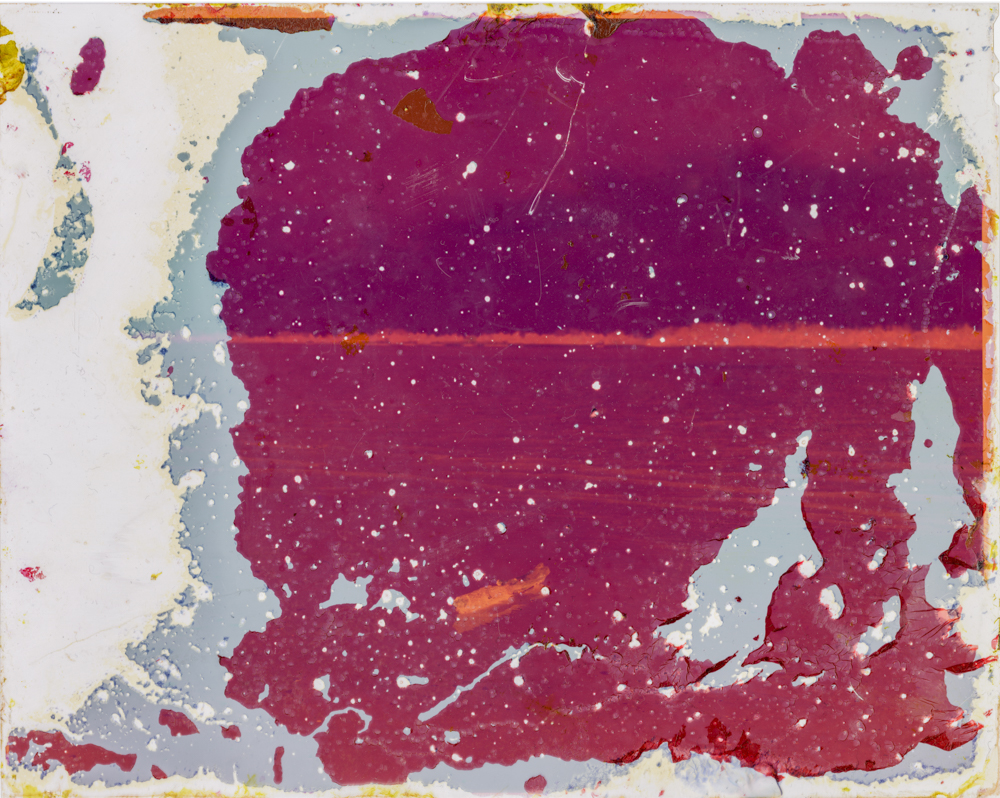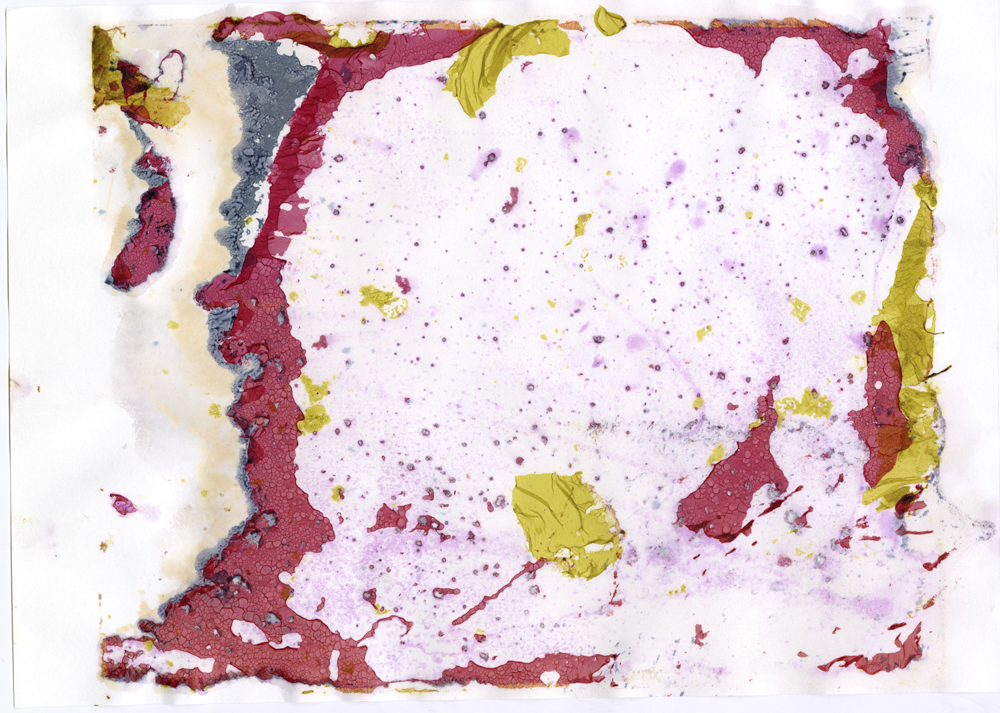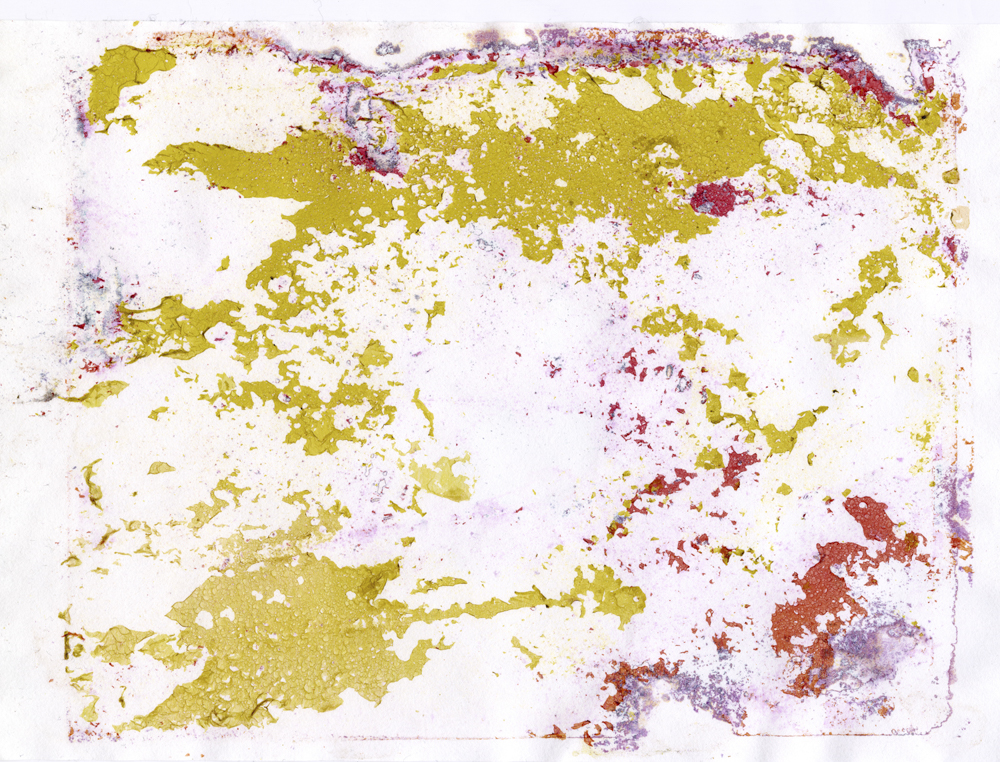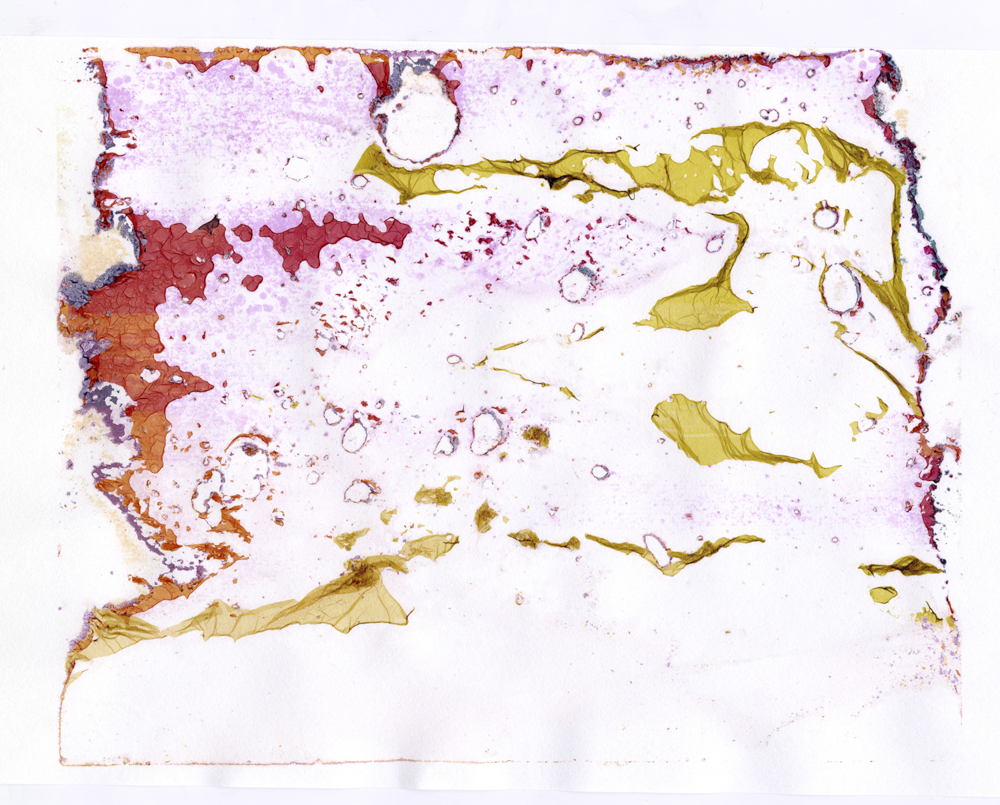Yunqian Lin: Entropy
Projects featured this week were selected from our most recent call-for-submissions. I was able to interview each of these individuals to gain further insight into the bodies of work they shared. Today, we are looking at the series Entropy by Yunqian Lin.
Yunqian Lin is a visual artist from China, living and working in New York City, Yunqian Lin received her MFA at The Savannah College of Art and Design. Her works are mostly experimental visual art creation. Combining photography media and natural interaction creates new possibilities. She chooses to shoot using film because of its value to her as a physical entity rather than the virtual one of digital image recording. The physical negatives provide expanded possibilities in her experimentation and her exploration of the power of nature to make marks. Additionally, the negatives represent a human-made object in my creations. By letting the film interact with nature physically, she reinforce her motivation to highlight the relationship between humans and nature. Through her experiments with various photographic media, she have discovered that color film has the most complex possibilities due to its different dye layers. Photography is not only an examination of reality as action but also a means of investigation of reality as an object. Through the research and application of traditional photographic materials, contemporary photographers do not simply return to the past, but also discover new possibilities to expand on the lessons of photographic history. Photographic materials are sensitive to light and matter, and this provides an innovative way to record the “reality” of a moment. Here photography is shifting into an area where it is used to collect evidence from direct encounters with the referent. In this exchange, chance plays an essential role in the process and results are unpredictable.
Entropy
My interest in the natural world comes from my desire to consider nature in terms of the karmic cycle of destruction and restoration. In my body of work, ENTROPY, I experiment with photographic technology and materials in innovative ways. Photography is not solely a medium for creating realistic views through optics and light sensitive materials; it can also be employed as an essential method for visualizing time, capturing light, mapping space, and recording the indexical trace. In this collection of photography-based works, I collaborate with natural forces to express my deep and personal appreciation of landscape. In many ways, nature remains uncontrollable, and this work probes the unpredictable effects of natural elements.
ENTROPY is an unconventional photographic documentation of different locations along the Savannah River, ranging from the city of Savannah towards Tybee Island. Water – in the form of a swift river, a regularly changing tide, or a calm pond – plays a central role in my work as both subject matter and creative process. Water flow in an environment has always been cyclical and is a provider of life for plants and animals alike. Throughout my investigation, I studied the behavior of water and documented its movements through my work. The images are created through interactions of photosensitive materials and water, created in the environments that I photograph. Through this exploratory process, I have been able to develop a reliable procedure for revealing some of the properties of water and broader themes of place, time, and change. This collection of works is not only a representation of photographic subjects at a particular moment. It is also a record of an entropic exchange over an extended period of time and a means of making the invisible visible.
The abstraction that results from my process provides room for the audience’s imagination and many varied viewer interpretations while also revealing the powerful forces of the natural world. By contextualizing the photographic prints with explanation of my process, field notes, collected samples, video documentation, and the negatives themselves; I provide the viewer with an extended document of place and invite them to ruminate on the impact of natural forces in creative endeavors. The properties of photographic materiality in cooperation with the effects of natural forces illustrate my own unpredictable experiences with nature; ENTROPY is evidence of humanity’s relationship with natural cycles.
Daniel George: Some are drawn to the photographic medium because of its precise, descriptive capacity. Tell me more about your interests in using the same materials to embrace the lack of predictability.
Yunqian Lin: Through my experiments with various photographic media, I have discovered that color film has the most complex possibilities due to its different dye layers. Large format 8×10” film provides nature with a larger canvas to wield its brushes. Learning from my experiments using multiple formats, 8×10” film preserves more of the original content and also allows more indexical marks after some length of the time interacting with natural elements. Additionally, the negatives represent a human-made object in my creations, emphasizing the juxtaposition of nature to human within my body of work.
DG: You write that you are considering nature “in terms of the karmic cycle of destruction and restoration,” and the Savannah River has certainly gone through processes that have both aggravated and mitigated its natural rhythm. What are some of the connections you see with this particular river and the karmic cycle?
YL: I chose water as the most important natural element in my creative process because of its symbolic value. It represents power, creation, and time. It is an ever-changing life source that shapes the earth. Water plays a central role in many religions and belief systems. It also symbolizes cleansing, healing, and vitality – even survival in some harsh climates. Water is ever-changing. Clean or murky, it shows its eternal capacity for continuous and multiform change, creating a diversity of complex results. Water is held in the atmosphere and then falls in the form of snow or rain. The water then returns to streams, rivers, and oceans where it evaporates and reenters the cycle at the beginning. A river is different from one moment to another as it flows along its natural path. Deep respect for water is mirrored in my Chinese culture as well.
A happy consequence of choosing to do my MFA at SCAD in Savannah was discovering its river as the focus for this body of work. The series is structured as a personal journey from the part of Savannah River near where I live and study to the exploration of the different areas through abstract forms that capture the creative power of nature through artistic means.
DG: What was the path that brought your project to its culmination? I am curious about the time you spent in these locations, and how this, along with the process of experimentation, informed your vision of the work.
YL: My first thought came from the impact of the nature I saw after the hurricane on our living environment. I feel the power of nature in all aspects, I saw the water pouring down, the trees rising from the roots. But there are also new plants grow with the rotten woods. I began to want to know more about nature, to understand the ecological cycle, and also to think about how to record these processes as a photographer. I’ve tried to bury the film in different soil environments, and I’ve tried to use different photographic materials too.
Finally, I chose water and Savannah River to cooperate.
Every time since I started taking pictures, I will go back and forth to this place many times. I spend time in that environment recording the movement of water flow and the impact of the weather.
Sometimes it is intense waves, sometimes it is gentle washing, and sometimes it is rising and falling with the tide. Sometimes I stay an hour at a time. But in a location like Tybee beach, I’ll be there for 8-9 hours by holding my film for the whole time.
Each encounter between the water and the emulsion generates mutual forces and finally forms the patterns on the film. Every event is like a slow conversation between me and nature.
DG: As I look at your photographs and consider your collaboration with the elements, I began to think about the relationship between the natural world and society in general—and the various degrees of comfort that individuals feel in nature (some find it tranquil, while others hostile). In what ways do these images and/or your process describe your affinity for the landscape?
YL: I always think that landscape, like people, has its own unique personality. It will be temperamental, gentle or radical. And everything is mutual, and all the experiences take place in one round of dialogue and get along with each other. I think when I get along with nature, it’s like the process of getting to know someone. There’s something to give, something to return, but there’s also disappointment. But I think the process has always been more important than the outcome. And I am happy to accept every result.
DG: I was drawn to the evidential value of these images—and the visual representation of time and natural cycles on a photographic negative. Though it would be more conspicuous to say that information has been removed from each before/after set of images, you suggest that you are adding visibility. What would you say is made evident through the destructive process?
YL: In terms of the expression of time, photography can reproduce the appearance of scenery at different times to present the contrast of change. Time is a process of accumulation and I use landscape photographs as samples in my study of time and nature. They’re like a set of data tagged in a science lab. By creating landscape photography, this process can touch on the experience of time itself. After my process, the film still preserves the original landscape photograph. However, the breakdown of the emulsion gives the impression of being slowly swept away by the current. The loss of the majority of the yellow layer gives the film image a mostly magenta color cast. On one hand, the abstract images in my work are the marks of nature; all the traces left on the negatives are the result of nature in action over a period of time. The final image is the accumulation and the recording of the whole event as a composite. On the other hand, these images embody the mystical power of nature. elements. The substances and bacteria in the water begin to react when they come into contact with the emulsion. Water flowing in different river basins has different movement patterns. Throughout the process, the constant change of water flow is hard to perceive with the human eye. But the film eventually turns invisible events into visible images, the untouchable into a tangible object.
Posts on Lenscratch may not be reproduced without the permission of the Lenscratch staff and the photographer.
Recommended
-
Ragne Kristine Sigmond: Portraits of Painterly LightDecember 2nd, 2025
-
Mary Pat Reeve: Illuminating the NightDecember 1st, 2025
-
Ricardo Miguel Hernández: When the memory turns to dust and Beyond PainNovember 28th, 2025
-
Pamela Landau Connolly: Columbus DriveNovember 26th, 2025
-
MATERNAL LEGACIES: OUR MOTHERS OURSELVES EXHIBITIONNovember 20th, 2025

